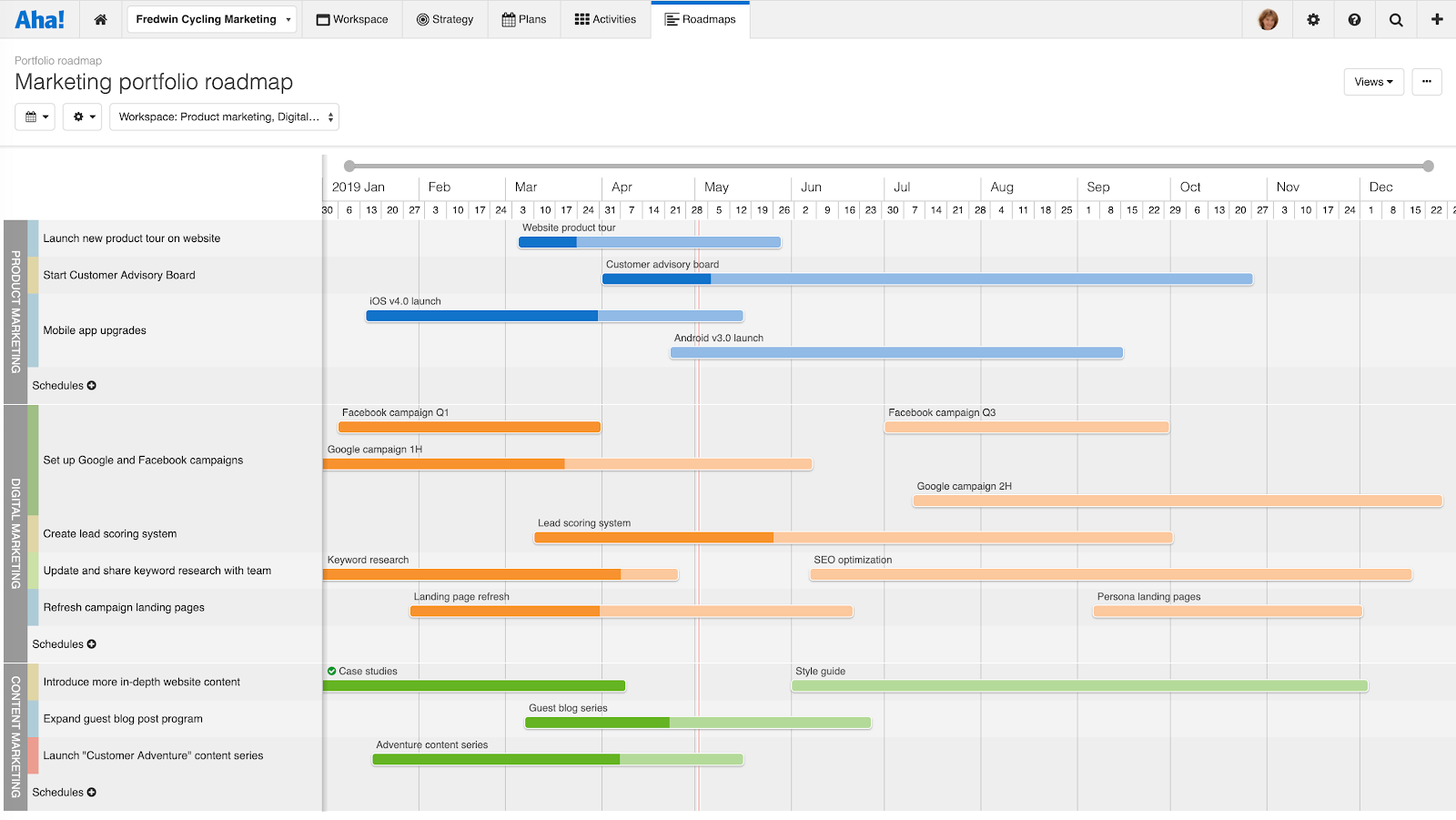
How to Create an Integrated Marketing Roadmap
Personas. Buyer journey. Omni-channel strategy. If you work in marketing, you have likely heard these buzzwords in the last few years. And you most definitely sat through a few conference presenters droning on about the importance of creating “360 marketing campaigns.” But the chatter has died down. Not because these concepts are no longer important, but because most forward-looking teams are implementing integrated marketing into their everyday work.
There is no other way — you need consistent messaging that is customer-centric across every touchpoint.
It is true that the idea of integrated marketing is not new. And it is relevant to most marketing teams today, especially because of the growing number of channels that exist to reach and communicate with customers. So let’s start with a definition of integrated marketing.
Integrated marketing is an approach that aims to deliver the same essential message and design aesthetic across all channels. So whether someone reads a blog post, sees a display ad, or follows your company on social media, they are receiving messages that are relevant and uniform throughout every platform. A fairly simple definition, right? The challenge is in actually making it so. This is particularly difficult in large companies where marketing responsibilities are split across many groups.
This is where an integrated marketing roadmap helps — visualizing all of your marketing programs and campaigns in an always-available collaborative workspace.
What does it look like? Your roadmap should be oriented around your marketing strategy. It should lay out the marketing initiatives (key areas of focus that will help you achieve your goals) as well as the planned programs and campaigns that support those initiatives. Your roadmap should also show the time frame and key dates for when that work will be completed.
The example below shows schedules of work broken out by functional group (product marketing, digital marketing, and content marketing), but you could also organize by programs or customer segments. Now, it may look like the roadmap above is simply representing one large team broken out into functional teams. Programs must have distinct owners to ensure progress, and some folks will have specific expertise based on their domain knowledge. But when you can visualize all of the marketing work, you can focus on how each of those efforts will build upon each other.
Now, it may look like the roadmap above is simply representing one large team broken out into functional teams. Programs must have distinct owners to ensure progress, and some folks will have specific expertise based on their domain knowledge. But when you can visualize all of the marketing work, you can focus on how each of those efforts will build upon each other.
Of course, to truly achieve an integrated customer experience, you need agility and collaboration across all groups — not just marketing. This is a mindset shift for many organizations. But close cross-functional partnerships will ensure that a customer-centric approach is considered holistically, from marketing to sales to support.
To get started, here are seven things you should do to create an integrated marketing roadmap:
Put goals first First, you need to consider the overall business objectives. Your marketing goals should support the company’s strategic vision and reflect what you want to achieve in a set time frame. For example, you may focus on how to reach the right customers, show them the value of what you are selling, and achieve a competitive advantage in the market.
Position it Now that you are clear on your goals, you need to craft positioning. This is the unique benefit of what you are offering and how you will communicate that to your audience. Ask yourself, “Who are our customers? What do they need? And what can they get (or not get) from the competition?”
Encourage cross-talk Integrated marketing campaigns require, well… integrated teams. This can be tricky when everyone is heads-down working on their own focus areas. But the only way to deliver a cohesive customer experience (and to catch any inconsistencies) is to stay connected. Review the roadmap in marketing team meetings and encourage collaboration across programs and functional areas.
Bring order to the ideas Marketers are highly creative people. I can bet that you and your teammates bounce dozens of ideas off each other in a week. But how do you know which ones to focus on? You need to vet ideas through the lens of your strategy. Allow your strategy to say no — this approach will help you be ruthless in cutting out any ideas that will distract you from achieving your goals.
Write a creative brief Before you can jump into the work, everyone needs to understand who you want to reach, what you want to convey, and how you want to communicate it. A creative brief is a document that lays out these key points and connects the creative concepts back to the larger business goals. This will keep internal teams (and any third-party agencies you are collaborating with) in sync.
Create workflows With so many different tasks, you need to encourage a uniform approach to the work. Establish light-weight processes that help the team collaborate more efficiently on programs and campaigns. For example, you can create templates for common project and assignment types.
Track it Review performance against the marketing goals. You need to know if your efforts are making a real impact and if you need to make adjustments to achieve those goals. Share the results transparently with the marketing team so that everyone is clear on progress.
If you have not worked this way before, it will likely be a challenge. New ways of thinking and working always are.
What I have described above requires everyone to put customers, collaboration, and consistency first. And this demands that you know exactly what you are trying to accomplish and how you are going to do so. But with an integrated marketing roadmap, you have a guide — aligning the team and showing what you are working towards.
Does your company deliver integrated marketing programs?
Bold marketers need a great tool — sign up for a free 30-day trial.




